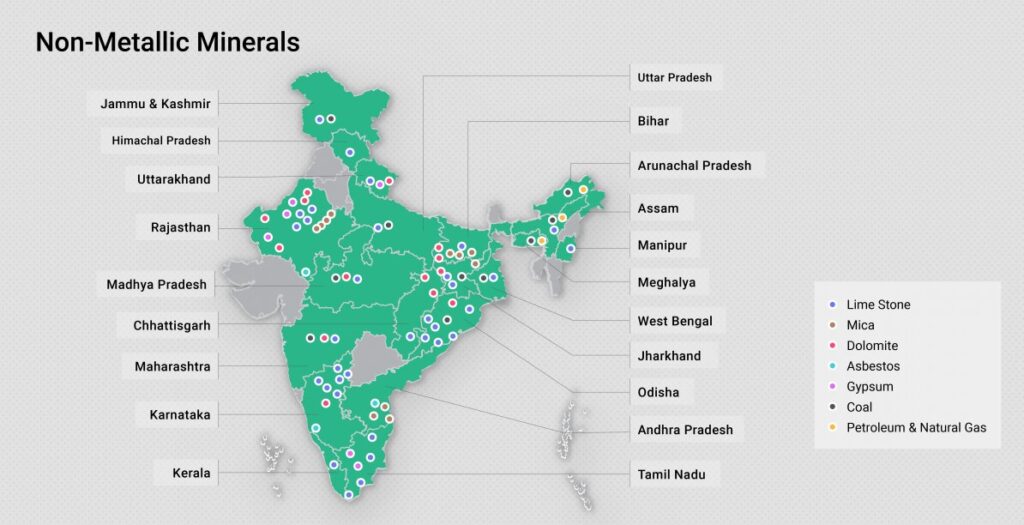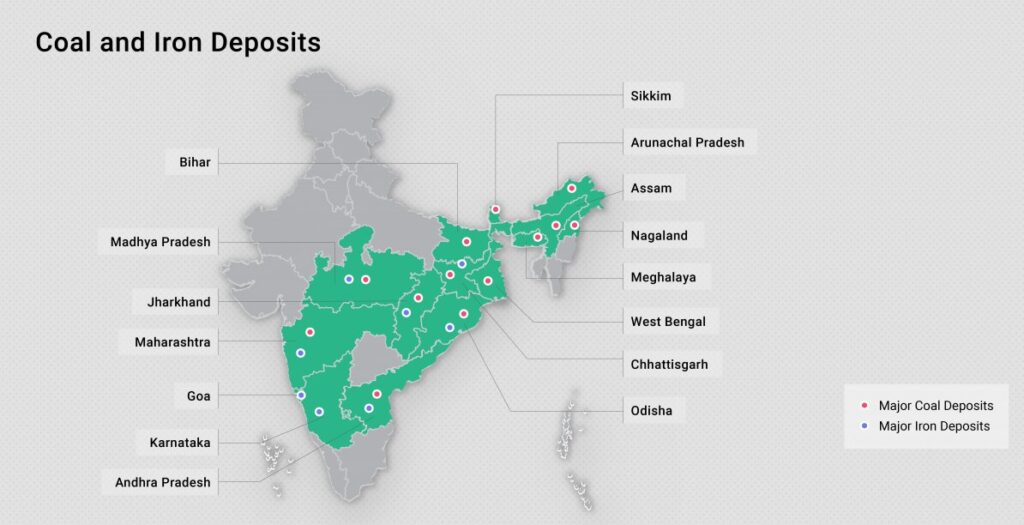The Indian Bureau of Mines (IBM) is a versatile government entity operating within the Department of Mines. Established in March 1948 under the Ministry of Works (now part of the Ministry of Mines), its primary mission involves:
- Advocating for resource conservation.
- Fostering scientific advancement in mineral resource management.
- Safeguarding the environment within mining operations.
It should be noted that IBM’s jurisdiction excludes coal, petroleum, natural gas, atomic minerals, and minor minerals.
Headquarters in Nagpur, Maharashtra

Latest Development
Aligned with the PM Gati Shakti National Master Plan, the Ministry of Mines has assigned the task of developing an independent portal to the Indian Bureau of Mines (IBM) in collaboration with BISAG-N (Bhaskaracharya National Institute for Space Applications and Geo-informatics).
Function of Indian Bureau of Mines
IBM’s roles encompass various vital functions:
- Policy Shaping: IBM actively contributes to formulating policies and guidelines to promote mineral resource development and conservation.
- Mining Permissions: It is key in granting mining leases and prospecting licenses facilitating responsible resource exploration.
- Environmental Oversight: Indian Bureau of Mines assesses and approves mining plans and environment management strategies to ensure sustainable mining practices.
- Regulatory Vigilance: Through inspections, IBM enforces adherence to mining laws and regulations, maintaining operational compliance.
- Innovative Research: The organization researches mining technology and environmental protection methods, fostering industry advancement.
- Data Hub: Indian Bureau of Mines serves as a valuable hub for collecting and disseminating data on mineral resources, facilitating informed decision-making and industry transparency.
Extras
Previous Alerts: In November 2022, the Steel Ministry alerted the Odisha Government about the potential underreporting of chromite and manganese ore grades. The M. B. Shah Commission report also investigated irregularities in the mineral sector, estimating losses at ₹59,000 crores.
Regulatory Authority: The Mines and Minerals Regulation and Development Act of 1957 empowers state governments to create rules preventing illegal mining, transportation, and storage of minerals. Ensuring the correct mineral grade during dispatch is the responsibility of state governments.
Odisha’s Mineral Wealth: Odisha boasts substantial mineral resources, including over 96% of India’s chrome ore, more than 51% of bauxite reserves, over 33% of hematite iron ore, and more than 43% of Manganese.
About Manganese: Manganese, a silvery-grey metal abundant in the Earth’s crust, plays a vital role in steel and alloy production. Its properties enhance the strength, toughness, and workability of various materials.
Indian Bureau of Mines (IBM): Established in 1948 with headquarters in Nagpur, Indian Bureau of Mines actively promotes the systematic and scientific development of the country’s mineral resources, both onshore and offshore. It maintains a comprehensive database on mines and minerals, contributing to creating a National Mineral Information Repository.

M.C.Q PYQ
Q.1) In India, what is the role of the Coal Controller’s Organization (CCO)? (2022)
1. CCO is the major source of coal Statistics in Government of India.
2. It monitors progress of development of Captive Coal/ Lignite blocks.
3. It hears any objection to the Government’s notification relating to acquisition of coal-bearing areas.
4. It ensures that coal mining companies deliver the coal to end users in the prescribed time.
Select the correct answer using the code given below:
1, 2 and 3
3 and 4 only
1 and 2 only
1, 2 and 4
Answer :-
